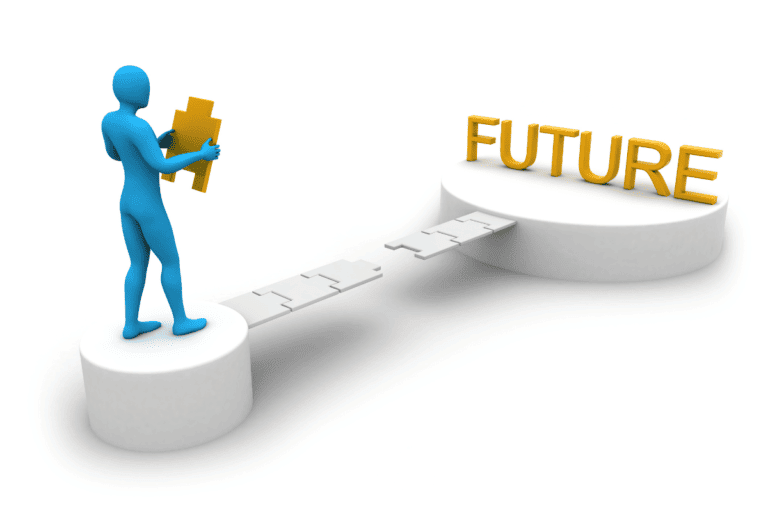Customer Service Management: Leading And Organizing Service Teams
Are you looking to improve your customer service team management skills? Leading and organizing service teams can be a challenging task, but with the right strategies in place, you can create a high-performing team that consistently delivers exceptional customer experiences.
In this article, we will explore key principles and best practices for effective customer service team management, including:
- Setting clear goals and expectations
- Building a strong team
- Providing ongoing training and development
- Implementing effective communication strategies
- Recognizing and rewarding outstanding performance.
When it comes to managing a customer service team, one of the first steps is to set clear goals and expectations. By clearly defining what success looks like for your team members, you provide them with a sense of direction and purpose. This clarity allows them to understand their role in achieving the overall objectives of the organization.
Additionally, setting clear expectations helps ensure consistency in performance standards across the team. With everyone aligned on what needs to be achieved and how it should be done, you can foster a culture of accountability and high-quality service delivery.
Key Takeaways
- Setting clear goals and expectations is essential for managing a customer service team effectively. It helps to align everyone’s efforts and ensures that everyone understands what is expected of them.
- Ongoing training and development are crucial for improving team performance. Regular training sessions and feedback help identify strengths and areas for improvement, promote continuous improvement, and boost employee engagement and motivation.
- Effective communication strategies play a vital role in maintaining employee engagement and fostering a positive work environment. Clear channels of communication, regular team meetings, and one-on-one check-ins promote unity, shared purpose, and personalized feedback and coaching.
- Recognizing and rewarding outstanding performance is key to creating a culture of excellence. Employee of the Month programs, peer recognition, and performance bonuses based on clear metrics help boost morale, inspire greater performance, and encourage others to strive for greatness.
Set Clear Goals and Expectations
You need to set clear goals and expectations for your customer service team. This is crucial in order to ensure that everyone is on the same page and working towards a common objective.
By clearly defining what you expect from your team, you can provide them with a sense of direction and purpose. Make sure that these goals are specific, measurable, achievable, relevant, and time-bound (SMART).
Additionally, it’s important to establish performance metrics that will help you track progress and evaluate individual performance.
Effective feedback plays a vital role in setting clear goals and expectations. Regularly providing feedback allows you to communicate with your team members about their strengths and areas for improvement. It also gives them the opportunity to ask questions or seek clarification on any unclear goals or expectations they may have.
By providing timely feedback, you can guide your team towards success by addressing any issues or challenges that may arise along the way.
Performance metrics are another essential component of setting clear goals and expectations. These metrics should be aligned with your overall business objectives, as well as the individual goals of each team member. By tracking key performance indicators such as response times, customer satisfaction scores, or sales targets, you can measure the progress of your team against these goals. This not only helps keep everyone accountable but also provides valuable insights into areas where further improvement may be needed.
Setting clear goals and expectations is essential for effective customer service team management. Through effective feedback and the use of performance metrics, you can provide guidance to your team while measuring their progress towards achieving their objectives. By doing so, you create a positive work environment where everyone understands what’s expected of them and has the tools necessary to succeed.
Build a Strong Team
To build a strong team, you need to recruit and hire the right talent. Look for individuals who not only have the necessary skills and experience, but also align with your team’s values and goals.
Once you have assembled your team, focus on fostering a positive team culture where everyone feels valued and supported. This will create a collaborative environment where team members can thrive and work together towards achieving common objectives.
Recruit and hire the right talent
Finding and attracting top talent is crucial for building a successful customer service team. To ensure you hire the right individuals, consider implementing effective talent acquisition strategies. Here are three key steps to help you recruit and hire the best candidates:
- Define your ideal candidate: Start by clearly outlining the skills, qualifications, and experience required for the role. Identify specific traits that align with your company’s values and culture, such as strong communication skills or empathy towards customers. By having a clear picture of your ideal candidate, you can focus your recruitment efforts on finding individuals who possess these qualities.
- Use multiple sourcing channels: Don’t limit yourself to just one method of recruitment. Utilize various sourcing channels like online job boards, social media platforms, professional networking websites, and industry-specific forums to reach a wider pool of potential candidates. Additionally, consider partnering with recruitment agencies or attending job fairs relevant to customer service positions to connect with skilled professionals actively seeking new opportunities.
- Conduct thorough interviews and assessments: Once you have shortlisted potential candidates, conduct comprehensive interviews to assess their suitability for the role. Ask behavioral questions that gauge their problem-solving abilities, conflict resolution skills, and ability to handle challenging customer situations effectively. Consider incorporating practical exercises or simulations that mimic real-life customer interactions to evaluate how candidates respond under pressure. Through a combination of interviews and assessments tailored to your organization’s needs, you can better determine which individuals possess the necessary qualities to excel in your customer service team.
By following these talent acquisition strategies when recruiting for your customer service team, you increase the likelihood of hiring individuals who are not only skilled but also aligned with your organization’s values and goals. Remember that building a strong team starts with bringing in the right people from the start.
Foster a positive team culture
Creating a positive team culture is essential for fostering collaboration and productivity, with studies showing that organizations with strong team cultures have 33% higher customer satisfaction rates. One way to foster a positive team culture is by organizing team building activities. These activities not only promote bonding among team members but also help in developing trust and improving communication within the team. Whether it’s participating in outdoor adventures, engaging in problem-solving challenges, or simply organizing social events, these activities provide opportunities for employees to work together outside of their regular work tasks and build stronger relationships. By investing time and resources into team building activities, you can create an environment where employees feel valued and connected to each other, leading to increased employee engagement and ultimately better customer service.
Another important aspect of fostering a positive team culture is ensuring employee engagement. When employees are engaged in their work, they are more likely to be motivated, productive, and committed to providing excellent customer service. To promote employee engagement within your customer service team, it is crucial to provide clear goals and expectations while also giving employees the autonomy to make decisions and take ownership of their work. Regularly recognize and reward achievements to show appreciation for their efforts. Additionally, encourage open communication channels where employees feel comfortable sharing ideas, concerns, or feedback without fear of judgment or retribution. By nurturing an environment that values employee input and promotes growth opportunities, you can create a positive team culture that fosters collaboration and empowers individuals to deliver exceptional customer service experiences.
Provide Ongoing Training and Development
Improve your customer service team’s performance by continuously providing them with ongoing training and development opportunities. By investing in their growth, you’re promoting continuous improvement and skill enhancement within the team.
Ongoing training allows your team members to stay up-to-date with the latest industry trends, technologies, and best practices. It also ensures that they have the necessary skills and knowledge to handle any customer inquiries or issues effectively.
Training and development programs can take various forms, such as workshops, online courses, or mentorship programs. These opportunities provide your team members with a chance to learn new techniques, improve their communication skills, and enhance their problem-solving abilities. By offering these resources consistently, you create an environment that fosters professional growth and encourages employees to strive for excellence.
Moreover, ongoing training helps boost employee morale and job satisfaction. When team members feel supported by their organization through continuous learning opportunities, they’re more likely to be engaged and motivated in their work. This leads to higher productivity levels and better customer service experiences overall.
Additionally, providing regular feedback during training sessions allows you to identify individual strengths and areas for improvement among your team members, enabling you to tailor future development plans accordingly.
Continuously providing ongoing training and development opportunities is essential for improving your customer service team’s performance. It promotes continuous improvement within the team by enhancing their skills and knowledge base. Moreover, it boosts employee morale and engagement while ensuring that they stay up-to-date with industry trends. By investing in your team’s growth through ongoing training initiatives, you create a positive work culture that empowers individuals to deliver exceptional customer service consistently.
Implement Effective Communication Strategies
Now that you’ve implemented ongoing training and development for your customer service team, it’s important to focus on implementing effective communication strategies. This is crucial for maintaining employee engagement and ensuring the success of your customer service efforts.
By establishing clear channels of communication and encouraging open dialogue, you can foster a positive work environment where team members feel heard and valued.
One effective communication strategy is to regularly hold team meetings or huddles to discuss important updates, address concerns, and celebrate successes. This allows everyone to stay informed about any changes or new initiatives, promoting a sense of unity and shared purpose within the team.
Additionally, conducting regular one-on-one check-ins with each team member can provide opportunities for personalized feedback and coaching, further enhancing their skills and job satisfaction.
Another key aspect of effective communication is actively seeking out customer feedback. Encourage your team members to regularly collect feedback from customers regarding their experiences with the company’s products or services. This information can be invaluable in identifying areas for improvement and making necessary adjustments to meet customer expectations. By involving your team in this process, you not only gather valuable insights but also demonstrate that their opinions are valued.
By implementing effective communication strategies, you can enhance employee engagement within your customer service team. Regular team meetings or huddles promote a collaborative work environment while individual check-ins allow for personalized feedback and support. Additionally, actively seeking out customer feedback empowers your team members while providing valuable insights into improving the overall customer experience.
Remember that open lines of communication are essential for creating a cohesive and successful customer service operation.
Recognize and Reward Outstanding Performance
Celebrate and reward exceptional achievements to boost morale and inspire even greater performance. Recognizing outstanding performance is crucial for employee motivation and creating a positive work environment. By acknowledging the hard work and dedication of your customer service team, you can encourage them to continue delivering exceptional service.
To effectively recognize outstanding performance, consider implementing these strategies:
- Employee of the Month Program: Create an Employee of the Month program where you highlight one team member’s exceptional contributions each month. This recognition can be accompanied by a small reward or incentive to further motivate employees.
- Peer Recognition: Encourage team members to recognize and appreciate each other’s efforts through a peer recognition program. This not only boosts morale but also fosters a sense of camaraderie among team members.
- Performance Bonuses: Offering performance-based bonuses is an effective way to reward outstanding achievements. Set clear metrics for evaluating performance and provide financial incentives for surpassing goals or delivering exceptional customer experiences.
Regularly evaluating employee performance is essential in ensuring that recognition is fair and consistent. Conducting regular performance evaluations allows you to identify top performers who deserve special recognition. Consider using key metrics such as customer satisfaction ratings, response times, or sales figures to objectively evaluate individual performances.
By recognizing and rewarding outstanding performance within your customer service team, you create a culture of excellence and motivate employees to consistently deliver their best. Celebrating achievements not only boosts morale but also encourages others to strive for greatness as well. Remember that motivated employees are more likely to provide exceptional customer service, leading to increased customer satisfaction and loyalty overall.

Frequently Asked Questions
How do I create clear goals and expectations for my customer service team?
To create clear goals and expectations for your customer service team, start by setting benchmarks that align with your overall business objectives. By establishing specific performance targets, such as response time or customer satisfaction ratings, you can provide a clear direction for your team members to work towards.
Regularly evaluate their performance against these benchmarks to monitor progress and identify areas for improvement. This not only helps in keeping everyone accountable but also fosters a culture of continuous growth and development within the team.
Remember, setting clear goals and expectations is crucial for driving success and ensuring that your customer service team delivers exceptional service consistently.
What strategies can I use to build a strong customer service team?
To build a strong customer service team, focus on employee motivation and team collaboration.
Motivated employees are more likely to deliver exceptional customer service, so provide them with opportunities for growth and recognition.
Encourage open communication and collaboration among team members, fostering a sense of camaraderie and shared goals.
Regularly assess and address any issues or challenges that may arise within the team, ensuring everyone feels supported and valued.
By prioritizing employee motivation and promoting effective teamwork, you can build a strong customer service team that consistently exceeds expectations.
How can I provide ongoing training and development opportunities for my team?
To provide ongoing training and development opportunities for your team, you can implement a variety of strategies that will keep them engaged and motivated.
Start by creating a comprehensive training program that covers both technical skills and soft skills, such as communication and problem-solving. This program should include regular workshops, seminars, and online courses to ensure continuous learning.
Additionally, encourage your team members to attend conferences or industry events where they can network with professionals in their field.
Another effective way to foster team development is through coaching and mentoring programs, where experienced employees can share their knowledge and insights with newer members.
By offering these ongoing training opportunities, you not only enhance the skills of your team but also create a culture of growth within your organization.
What are some effective communication strategies that I can implement with my customer service team?
To effectively communicate with your customer service team, it’s crucial to implement active listening and conflict resolution strategies.
Active listening involves fully focusing on what the person is saying without interrupting or formulating a response in your mind. It shows respect and understanding towards your team members, allowing for open and honest communication.
Additionally, conflict resolution techniques should be implemented to address any conflicts that may arise within the team. Encourage open dialogue, promote empathy, and seek mutually beneficial solutions when resolving conflicts.
By incorporating these strategies into your communication approach, you can foster a positive and productive environment within your customer service team.
How can I recognize and reward outstanding performance in my customer service team?
To recognize and reward outstanding performance in your customer service team, you can implement recognition programs and performance incentives.
Recognition programs can include regular employee of the month awards or shout-outs during team meetings to acknowledge exceptional achievements.
Performance incentives, such as bonuses or gift cards, can be given based on specific goals or targets that are met or exceeded.
These initiatives not only motivate your team members but also create a positive work environment where their efforts are appreciated and valued.
By providing tangible rewards for outstanding performance, you can boost morale and encourage your customer service team to consistently deliver excellent results.
Conclusion
In conclusion, leading and organizing a customer service team requires clear goals and expectations, a strong team foundation, ongoing training and development, effective communication strategies, and recognition of outstanding performance.
By setting clear goals and expectations, you provide your team with direction and purpose.
Building a strong team ensures that each member contributes their unique skills and strengths to achieve those goals.
Additionally, providing ongoing training and development opportunities allows your team to continually improve their skills and stay up-to-date with industry trends.
Implementing effective communication strategies fosters collaboration, problem-solving, and efficiency within the team.
Lastly, recognizing and rewarding outstanding performance not only motivates individuals but also boosts overall morale.
By following these steps in managing your customer service team effectively, you can ensure that your organization provides exceptional service to customers while fostering a positive work environment for your employees.
Remember: set clear goals, build a strong team foundation, provide ongoing training, implement effective communication strategies, recognize outstanding performance.
With these key elements in place, parallelism will elevate the success of your customer service team management efforts.







